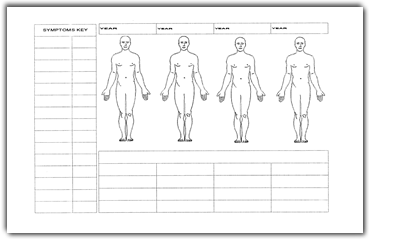 Questions & Answers
Questions & Answers
Do all persons providing physical therapy have the same education/background?
No. All licensed therapists have passed the state board examination. To sit for the boards one must graduate with a bachelor’s, a master’s or a doctorate in physical therapy. Once licensed, the therapist can further specialize in a chosen field such as orthopaedics, geriatrics, pediatrics, manual therapy etc. Surprisingly state law allows for the provision of “physical therapy” in some instances by persons who are non-licensed. For your own safety, know your clinician’s education. You are entitled to this information and the best possible care. You can refuse treatment by anyone who is not licensed.
How do I select a physical therapist?
Selection of your physical therapist may be based on specialization, insurance, and location. There are 5,953 licensed physical therapists in the State of Georgia and 1,972 licensed physical therapy assistants. Of the 5,953 therapists, 127 are Board Certified in Orthopaedics and 82 are certified in Manual Therapy; 19 therapists are Board Certified in both Orthopaedics and also Manual Therapy; Cindy Richards is one of the 19 Board Certified therapists in both Orthopaedics and Manual Therapy.
A physician may suggest a therapist, but with a written referral you can select anyone whom you wish to see. Selection of a therapist may be further influenced by your insurance. HMO’s will specify who you must see in order for the treatment to be paid by their plan. All other types of insurance, whether it is a POS a PPO or any other indemnity insurance may suggest, but cannot control where you receive therapy. Many physical therapy providers are willing to provide arrangements that are workable in or out of your insurance network depending on the policies in the physical therapy office that you have chosen. The best way to find out if there are any penalties for seeing the provider of your choice is to call the physical therapy office and ask. The physical therapy provider will need your insurance information to answer your questions.
Do I need a referral from my doctor before I see the therapist?
It is highly recommended that you see your physician before starting physical therapy; however, you can see the therapist first for an evaluation. At that time, if it is determined that physical therapy could be beneficial, a physician can be recommended if you do not already have one. Doctors that are licensed in the state of Georgia to refer to physical therapists include Medical Doctors (MD), Doctor’s of Podiatric Medicine (DPM), Doctor’s of Osteopathy (DO), and Dentists (DDS). In 48 states there is selective direct access to a physical therapist; in the state of Georgia, it is necessary to have access to a therapist through referral from a doctor if treatment is related to an injury or ailment. Services provided for the purpose of fitness, wellness, or prevention do not require the consult of a physician.
What is the difference between physical therapy and chiropractic care?Physical therapists can be found in many environments including, but not limited to hospitals, school systems, outpatient offices, assisted living homes, and home care. A therapist may provide treatment to patients pre-operatively, post-operatively or if no surgery is indicated. A therapist works closely with the patient, physicians, and/or coaches, and employers to ascertain and provide the best possible treatment. Rehabilitation or treatment is goal specific to achieve results that are realistic and agreed upon by the patient and the therapist; therefore, there is a goal with achieved results and an end to the treatments.
Manipulation is the skilled passive movement of a joint and may be used by a physical therapist, osteopath, or chiropractor. The differences occur between the disciplines in the selection of other treatment that can be offered, the specific techniques used, the theory behind what manipulation accomplishes, and when manipulation is contraindicated. A physical therapist will evaluate to determine how the body moves. Limitation of movement secondary to pain and/or stiffness vs. hypermobility is assessed. A variety of techniques including modalities such as heat and ice, exercise-(isometric, isotonic, isokinetic, open chain, closed chain, core-stabilization, plyometrics, or stretching), and mobilization/manipulation may be selected in a treatment. The strategy is to mobilize tissues that are tight or restricted and stabilize, deferring manipulation, those that have too much segmental mobility. Thereafter it is education of the patient to maintain the new found results and minimize recurrence of symptoms. Again physical therapy treatments are goal directed and the goals are established to be met within a time frame. The goals are determined in a consultation between the therapist and the patient. Physical therapists work closely with neurologists, orthopedists, or any other physician if there is suspicion of pathology or dysfunction that is not musculo-skeletal related or when symptoms do not respond to treatment.
Forms
-- coming soon --
